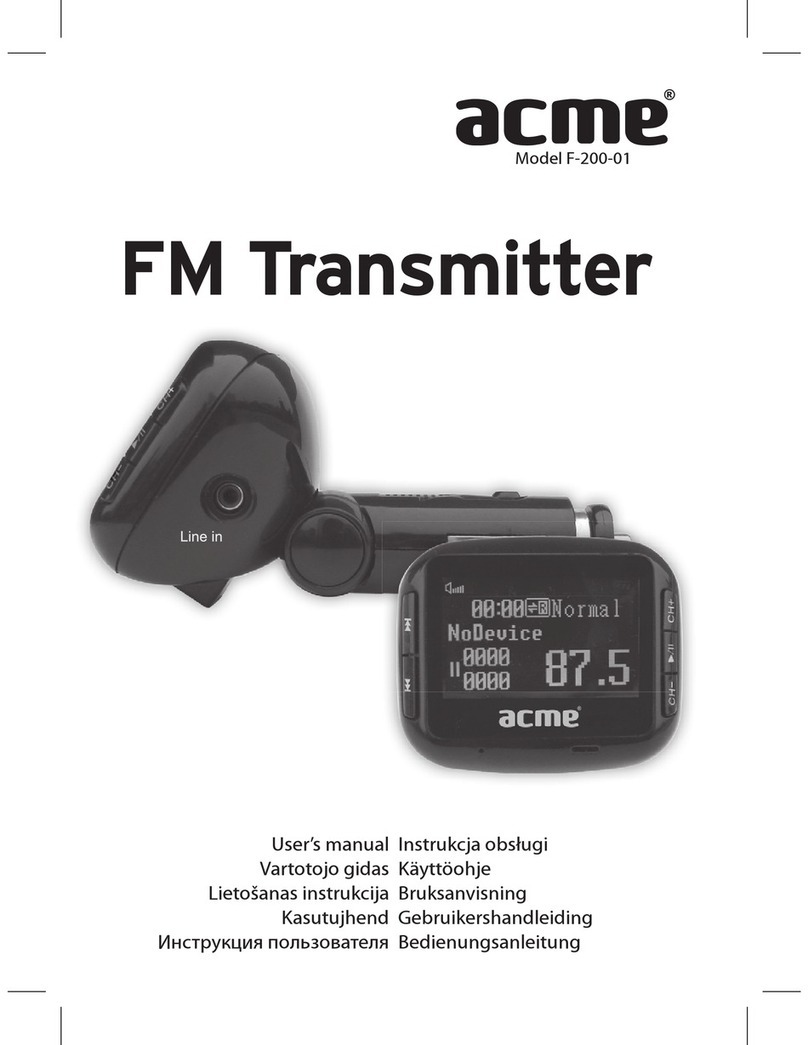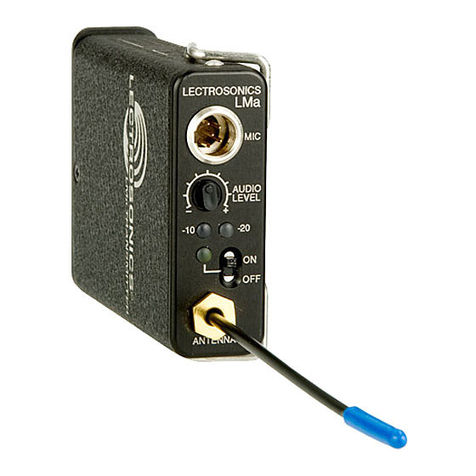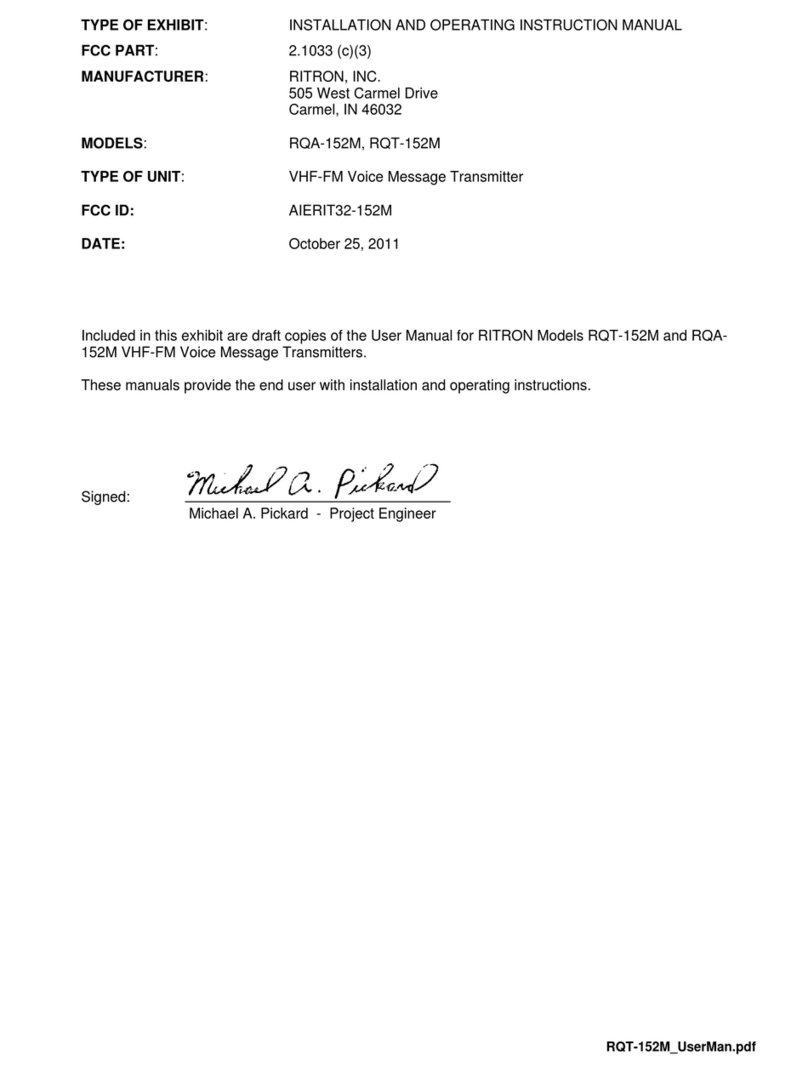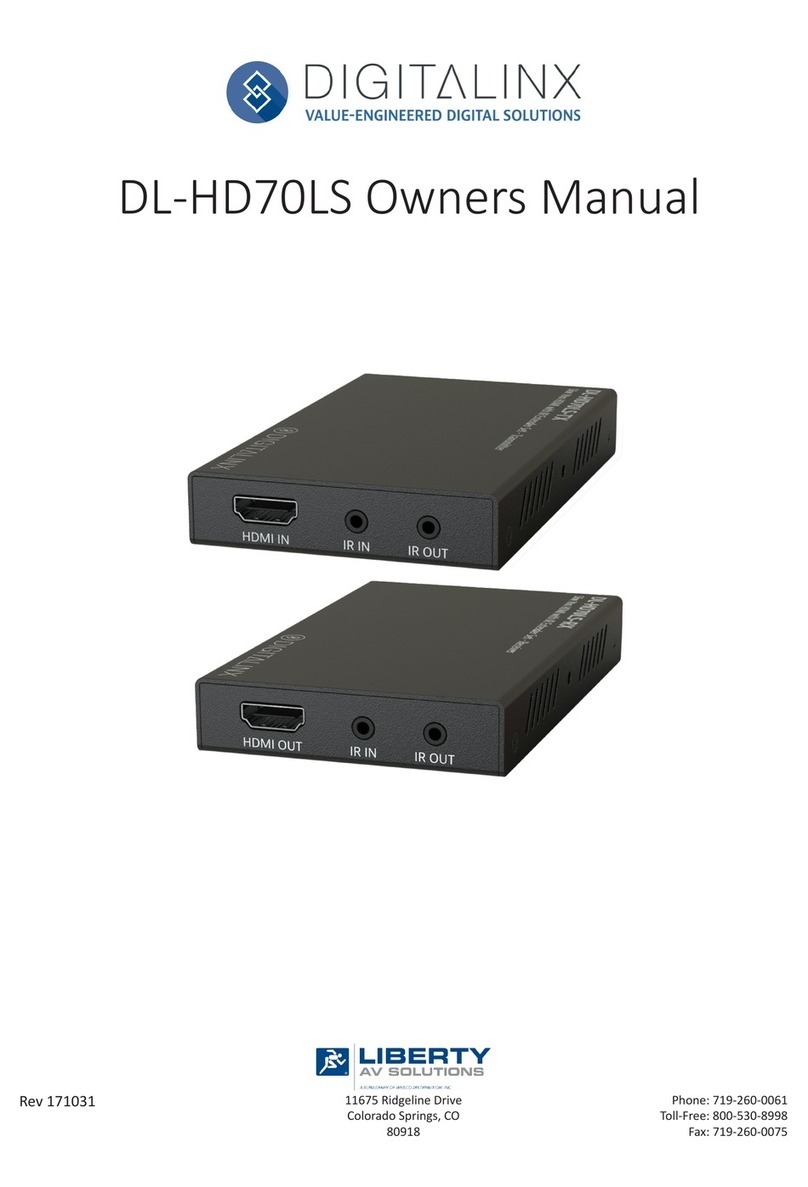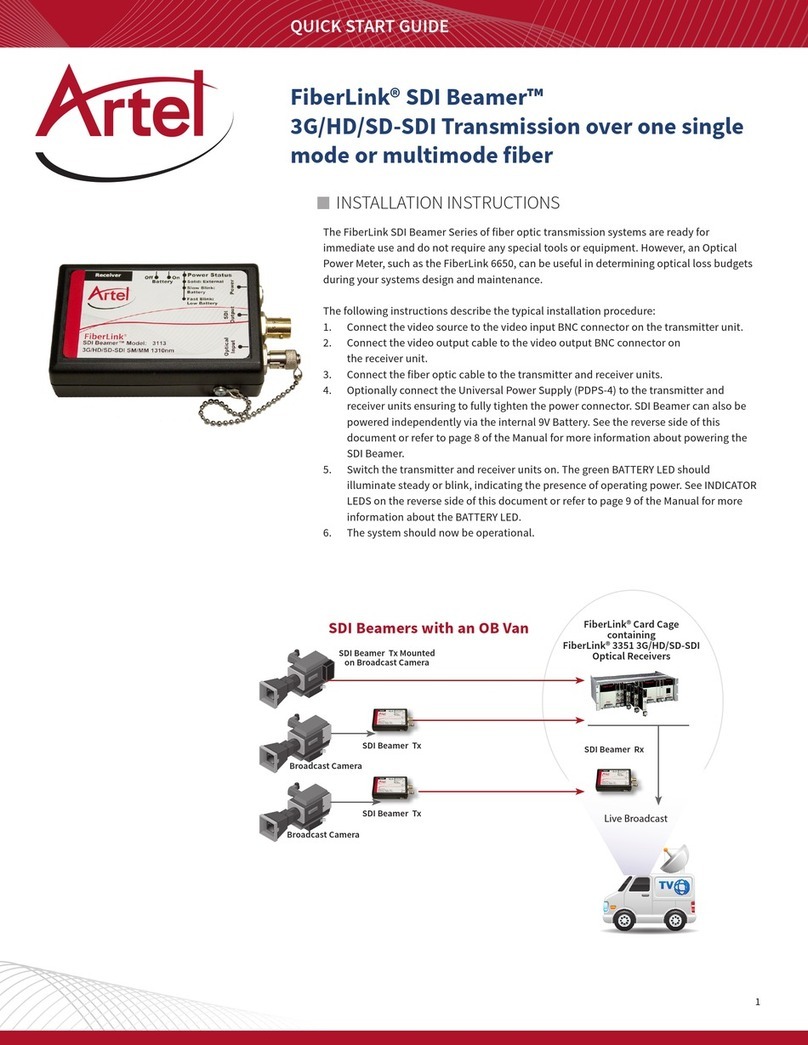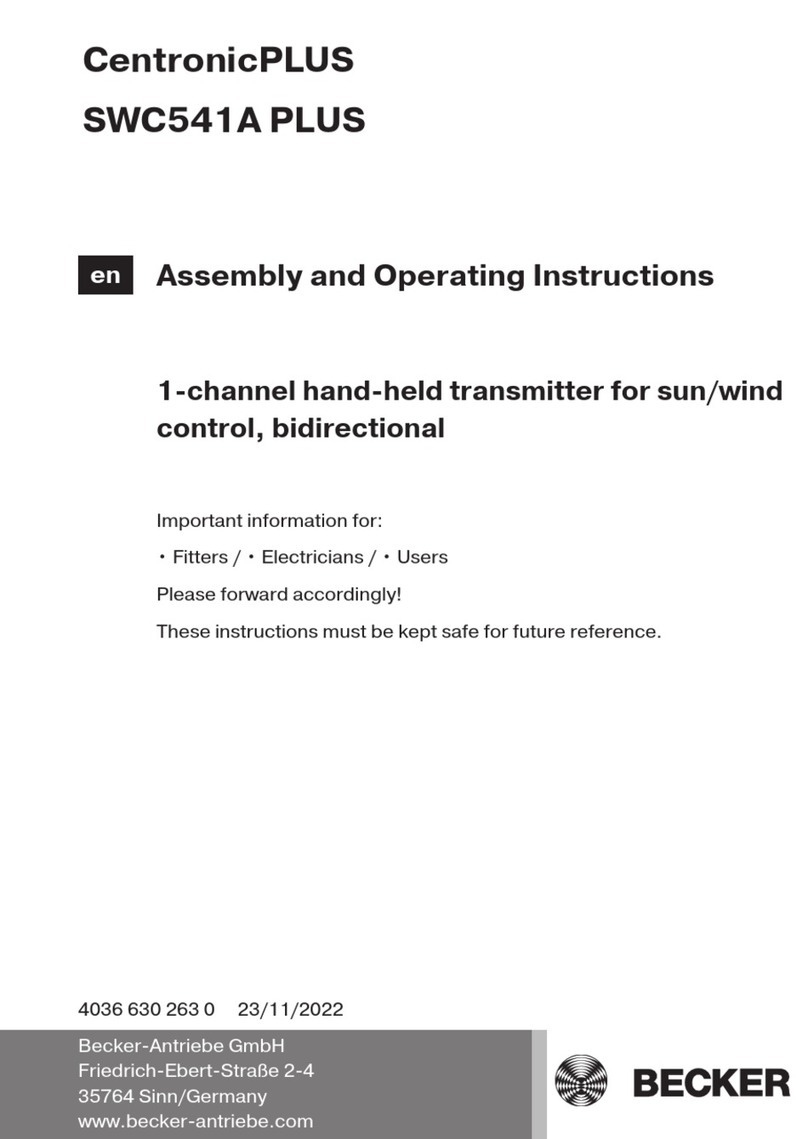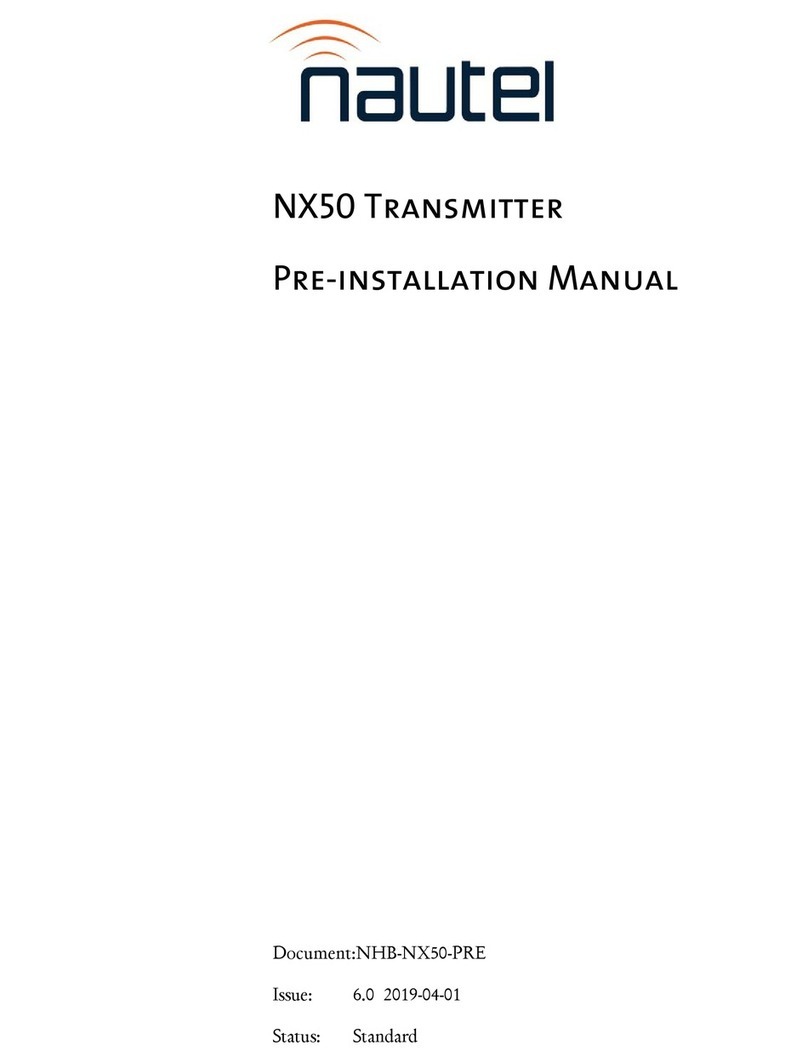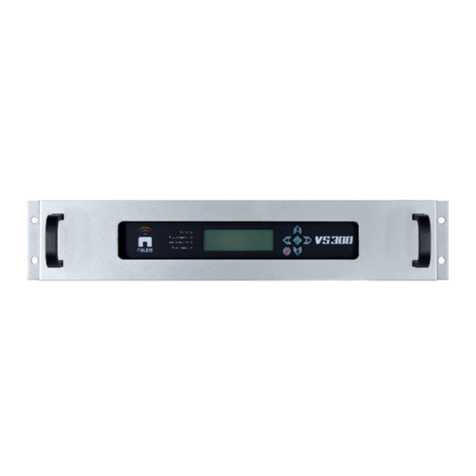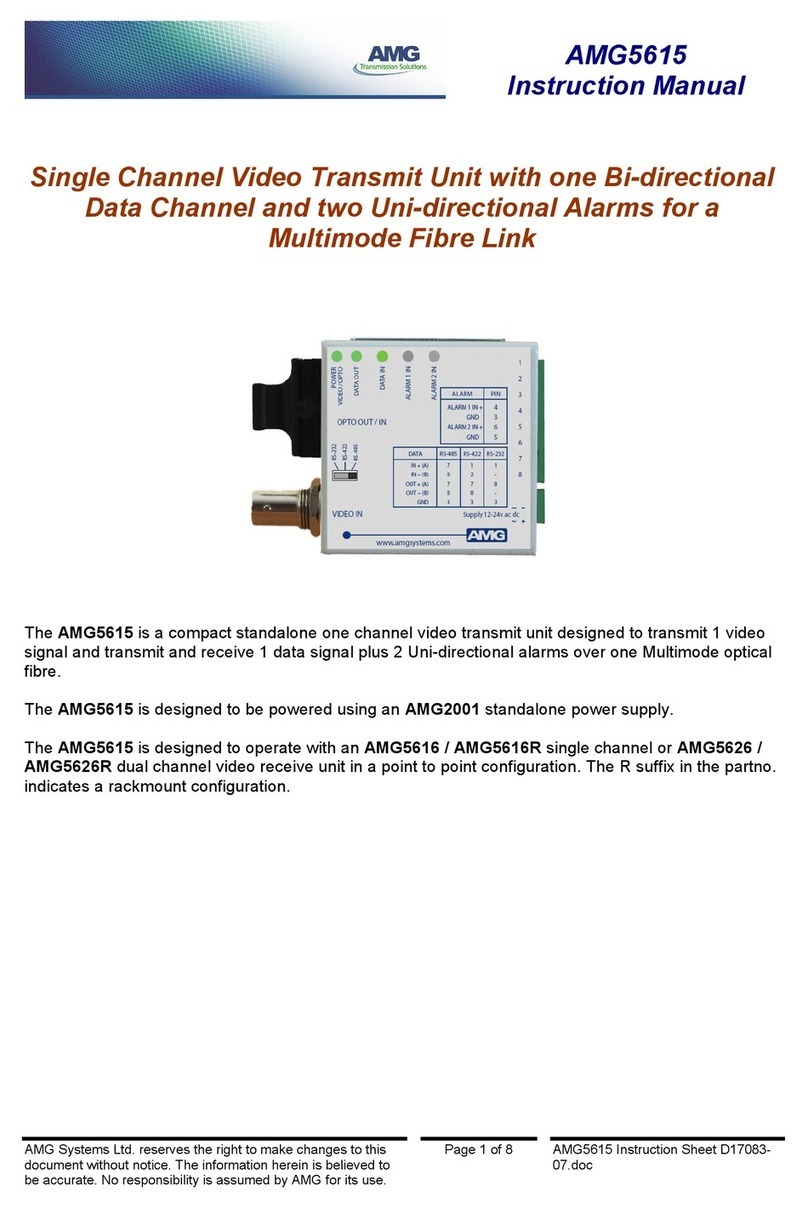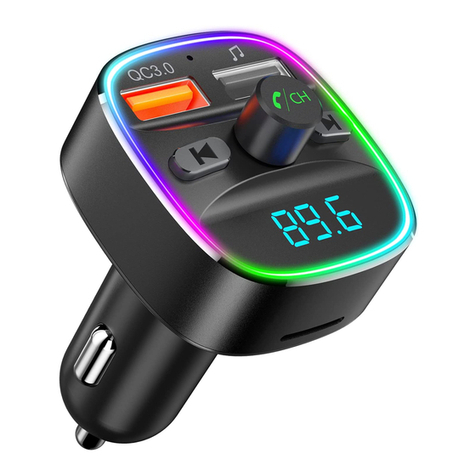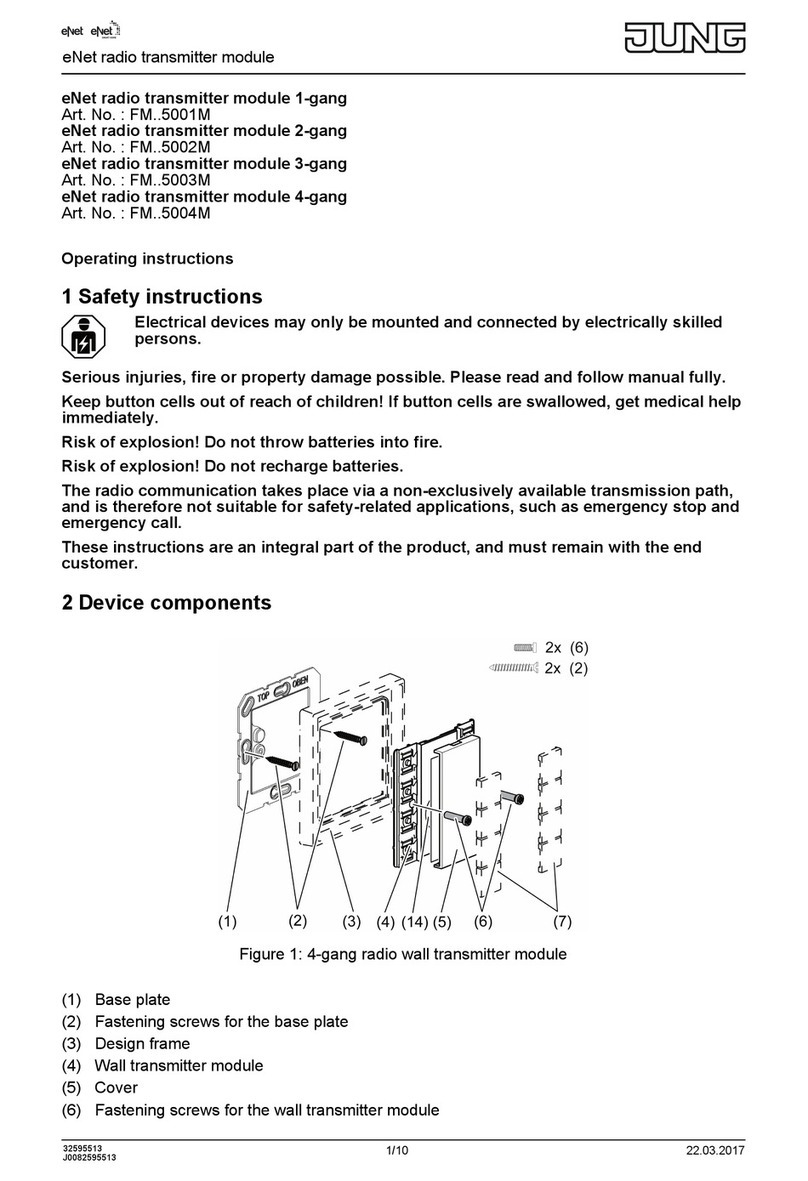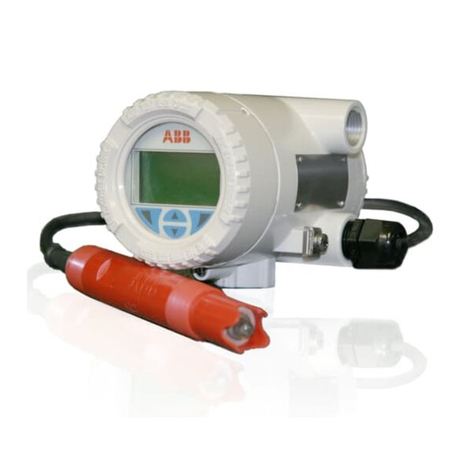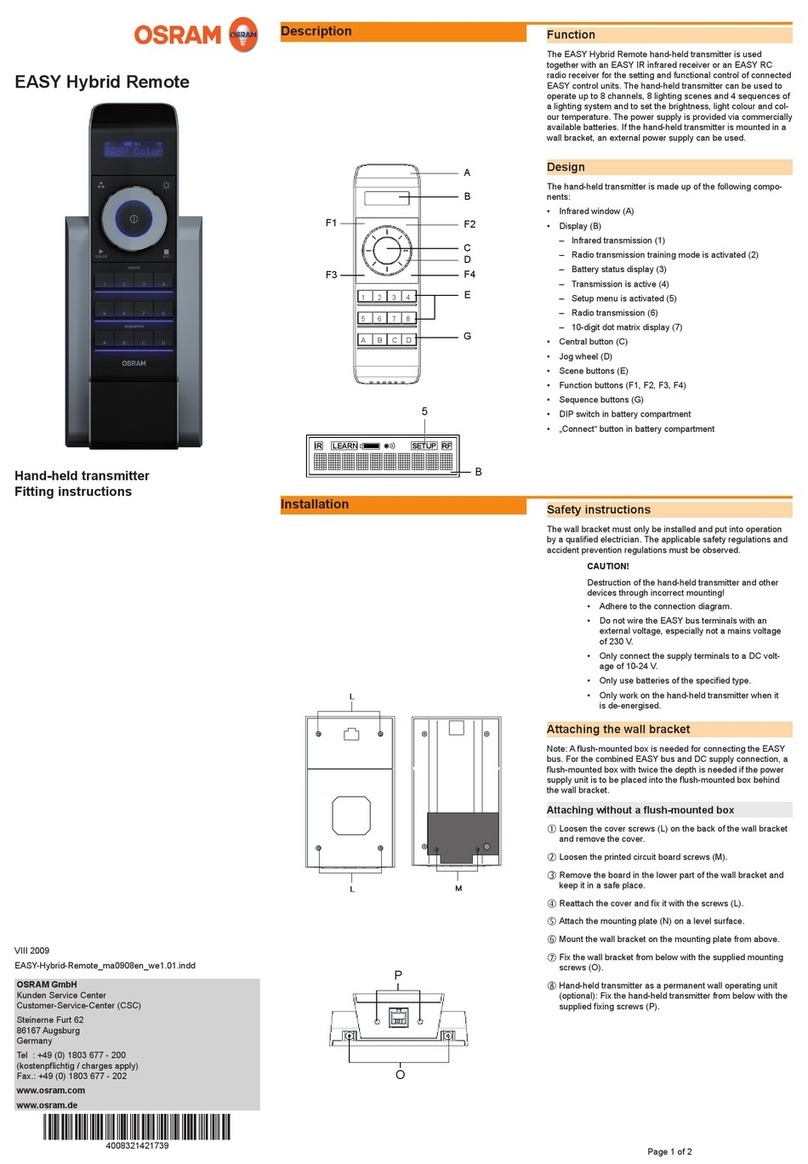Jegs JEGS 30 User manual


[ 1 ]
Table of Contents
1. Transmitter Feature Diagram........................................................... 2
2. Installing Batteries ........................................................................... 3
3. Basic Operation ................................................................................. 3
4. Binding Transmitter ......................................................................... 4
5. Lock/Unlock Key Button ................................................................... 4
6. Steering Adjustment ......................................................................... 4
• Reversing Servo...................................................................................... 4
• Steering End Point Adjustment ........................................................ 5
• Steering Digital Trimming Adjustment .......................................... 5
• Dual Rate Steering Adjustment........................................................ 6
7. Throttle Adjustment .......................................................................... 6
• Throttle Reverse Setting..................................................................... 6
• Throttle End Point Adjustment......................................................... 7
• Throttle Digital Trimming Adjustment........................................... 8
8. Auxiliary Channel 3 Adjustment...................................................... 8
• Reverse Setting ...................................................................................... 8
• On/Off CH3 Switch Setting................................................................ 9
9. Factory Reset ..................................................................................... 9
• Factory Default Setting ....................................................................... 9
10. FUNC................................................................................................. 9
• FUNC Mode
11. Receiver..........................................................................................10
• Receiver Binding ..................................................................................10
• Fail-Safe Adjustment..........................................................................10
12. Power Alarm ..................................................................................10
• No Activity Alarm.................................................................................10
• Low Battery Voltage Alarm...............................................................10
13. Certication ...................................................................................11
14. Specications ................................................................................12

[ 2 ]
1 — Transmitter Feature Diagram
2

[ 3 ]
2 — Installing Batteries
1. Remove the battery cover from the transmitter.
2. Insert 4 AA alkaline dry cell batteries
according to their polarity.
3. Replace the battery cover.
3 — Basic Operation

[ 4 ]
4 — Binding Transmitter
1. Each transmitter is assigned a random unique ID number. In order to
begin using the transmitter system, you will have to bind the receiver
to the transmitter.
2. Follow the receiver binding instructions on page 10.
5 — Lock/Unlock Key Button
6 — Steering Adjustment
Lock Key Button
1. Push the D/R switch to the Right.
2. While holding the D/R switch
to the right, turn the transmitter
power switch to ON.
3. Two short “beep” sounds indicate
conrmation and the LED light
ashes.
4. All button functions are
now locked.
Unlock Key button
1. Push the D/R switch to the Left.
2. While holding the D/R to the left,
turn the transmitter power switch
ON.
3. Two short “beep” sounds indicate
conrmation.
4. All button functions are
now unlocked.
Reversing Servo
1. Press and hold steering wheel
(ST) R/+ key button.
2. While pressing ST R/+ key
button, turn on the transmitter
power switch.
3. Two short “beep” sounds
indicate conrmation.
4. The steering has now
been reversed.
[ ST = Steering Wheel TH = Throttle Trigger ]

[ 5 ]
Left Steering End Point Adjustment
1. Turn the steering wheel (ST) fully to the left.
2. Once the value reaches the limit,
a long steady “beep” will sound.
• Decrease value: Turn the steering
wheel fully to left and press
ST L-key button
• Increase value: Turn the steering
wheel fully to the left and press
ST R+ key button
3. Use this to decrease or increase left steering angle adjustment.
Steering Digital Trimming Adjustment
1. Once the value reaches the limit,
a long steady “beep” will sound.
2. Two short “beep” sounds indicate the
steering is at the neutral position.
a. Decrease: Press ST L/- key button
b. Increase: Press ST R/+ key button
3. When the vehicle is not moving, this
function allows you to adjust the
steering to the neutral position.
Right Steering End Point Adjustment
1. Turn the steering wheel (ST) fully to the right
2. Once the value reaches the limit,
a long steady “beep” will sound.
• Decrease value: Turn the steering
wheel fully to the right then press
ST L- key button
• Increase value: Turn the steering
wheel fully to the right then press
ST R+ key button
3. Use this to decrease or increase right steering angle adjustment.
Steering End Point Adjustment
[ ST = Steering Wheel TH = Throttle Trigger ]

[ 6 ]
Dual Rate Steering Adjustment
• Decrease: Push the D/R button
to the left
• Increase: Push the D/R button
to the right
1. Once the value reaches the limit,
a long steady "beep" will sound.
2. Dual-rate Steering allows on-the
y travel adjustment to both sides
(left and right) of the steering servo.
7 — Throttle Adjustment
Throttle Reverse Setting
1. Press and hold ST L/- key button.
2. While holding ST L/- key button turn the transmitter power switch to ON.
3. Two short “beep” sounds indicate conrmation.
4. The throttle trigger has now been reversed.
[ ST = Steering Wheel TH = Throttle Trigger ]

[ 7 ]
Throttle (Accelerate)
1. Pull and hold the throttle trigger
(TH) fully to the Forward-side.
2. Once the value reaches the limit,
a long steady “beep” will sound.
• Decrease: While holding the
throttle trigger, press
TH Rev/- button
• Increase: While holding the
throttle trigger, press
TH Fwd/+ button
3. Use the TH Rev/- or TH Fwd/+
buttons to adjust the throttle
trigger to desired throw.
4. This can also be performed when the
receiver power is off.
Throttle End Point Adjustment
Brake (Decelerate)
1. Push the throttle trigger (TH) fully
to the brake-side
2. Once the value reaches the limit,
a long steady “beep” will sound.
• Decrease: While holding the brake
trigger, press TH Rev/- button
• Increase: While holding the brake
trigger, press TH Fwd/+ button
3. Use the TH Rev/- or TH Fwd/+
buttons to adjust the brake to
desired throw.
4. This can also be performed when
the receiver power is off.
[ ST = Steering Wheel TH = Throttle Trigger ]

[ 8 ]
When the vehicle is not moving, this
function allows you to adjust the
throttle to the neutral position.
1. Once the value reaches the limit,
a long steady “beep” will sound.
2. Two short “beep” sounds indicate
conrmation.
• Decrease: Press TH Rev/-
button
• Increase: Press TH Fwd/+
button
3. If the value is lower than the
setting limit of ESC, some
functions may be invalid.
8. Auxiliary Channel 3 Adjustment
Reverse Setting
1. Press and hold CH3 key button
while turning the power switch on.
2. Listen for Two short “beep” sounds
for conrmation.
3. The CH3 Function has now been
reversed.
Throttle Digital Trimming Adjustment
[ ST = Steering Wheel TH = Throttle Trigger ]

[ 9 ]
On/Off CH3 Switch Setting
This function allow you to turn On/Off the
CH3 key-button.
1. Two quick presses of the CH3 key button.
• Turn-On: Two short beep sounds
• Turn-Off: One short beep sound
9 — Factory Reset
Factory Default Setting
1. Press and hold the TH Fwd/+ or TH Rev/- key button.
2. While holding the Fwd/+ or Rev/- key button turn
the transmitter switch to ON.
3. Two short beep for conrmation.
4. Your transmitter has now
reset to the factory
setting.
10 — FUNC
FUNC Mode
FUNC Mode locks all the key buttons and
throttle except the steering wheel.
1. To enter the FUNC mode, Turn the
transmitter power switch to ON, press
and hold the FUNC key button, two short
“beep” sounds for conrmation.
2. To leave the FUNC mode, press the FUNC
key button once, two short “beeps” will
sound for conrmation.
[ ST = Steering Wheel TH = Throttle Trigger ]

[ 10 ]
11 — Receiver
Receiver Binding
1. Turn the transmitter switch ON.
2. Press and hold the “binding button” (B) on the receiver.
3. While holding the binding button, turn the vehicle power
switch to on.
4. The LED of the receiver will blink indicating that it is
searching for a transmitter to bind with.
5. Once the transmitter and the receiver are bound
together, the receiver’s LED light will turn solid.
6. This may take up to 30 seconds, otherwise, repeat
step 1 through 5.
Fail-Safe Adjustment
1. Press and hold the receiver “binding button” (B) until
the LED light ashes.
2. Adjust the throttle trigger and steering wheel positions.
3. Press the binding button to save program. Once the
position is programmed, the LED light will ash and
stay solid.
4. The failsafe function defaults the servos (or ESC)
to a pre-programmed position once the receiver cannot
receive the signals from the transmitter. This can be due
to low voltage from the battery or radio interference.
12 — Power Alarm
No Activity Alarm
When the steering wheel (ST), throttle trigger (TH) or any button is not operated
for 15 minutes, a slow beeping alarm will sound to indicate that there has been
no action and the power should be turned off.
Low Battery Voltage Alarm
A quick beeping alarm sounds and the power LED light will blink.
[ ST = Steering Wheel TH = Throttle Trigger ]

[ 11 ]
13 — Certication
1. Doc Declaration
Hereby, [GTI Modelsport Co. Ltd.] declares that the radio equipment type [AMP30]
complies with Directive 2014/53/EU.
The full text of the EU declaration of conformity is available at the following
internet address: www.cenracingusa.com
2. FCC Statement
This device complies with Part 15 of the FCC Rules. Operation is subject to the
following two conditions:
1. This device may not cause harmful interference, and (2) this device must
accept any interference received, including interference that may cause
undesired operation.
This equipment has been tested and found to comply with the limits for a Class B
digital device, pursuant to Part 15 of the FCC Rules. These limits are designed to
provide reasonable protection against harmful interference in a residential
installation. This equipment generates, uses and can radiate radio frequency
energy and, if not installed and used in accordance with the instructions, may cause
harmful interference to radio communications. However, there is no guarantee that
interference will not occur in a particular installation. If this equipment does cause
harmful interference to radio or television reception, which can be determined
by turning the equipment off and on, the user is encouraged to try to correct the
interference by one of the following measures:
• Reorient or relocate the receiving antenna.
• Increase the separation between the equipment and receiver.
• Connect the equipment into an outlet on a circuit different from that to which
the receiver is connected.
• Consult the dealer or an experienced radio/TV technician for help.
Any changes or modications not expressly approved by the party responsible for
compliance could void the user’s authority to operate this equipment
This transmitter must not be co-located or operating in conjunction with any other
antenna or transmitter.
Old electric appliances must not be disposed of together with residual waste, but
have to be disposed of separately. The disposal at the communal collecting point
via private persons is free. The owner of the old appliances is responsible for
bringing the appliances to these collecting points or to a similar collection point.
With little personal effort, you contribute to recycling valuable raw materials and
the treatment of toxic substances.

[ 12 ]
Radiation Exposure Statement
This product complies with the FCC portable RF exposure limit set forth for an
uncontrolled environment and is safe for intended operation as described in this
manual. Further RF exposure reduction can be achieved if the product can be
kept as far as possible from the user body or if the device is set to lower output
power if such function is available.
14 — Specications
SPECIFICATIONS
Tx (Transmitter)
Channels: 3
RF: ISM Band (2.4 GHz)
Power: DC 6V
Distance: Open Space 100 m
Battery: Alkaline “AA”
(Do not charge alkaline batteries)
Indicators: Blue LED
Color: Black
Rx (Receiver)
Antenna: Do not roll antenna up
CH1: For steering servo
CH2: For ESC
CH3: AUX
Power: DC 4V~DC 9V
Button: Binding / Fail-Safe
Indicators: Blue LED
Color: Black
This manual suits for next models
1
Table of contents
